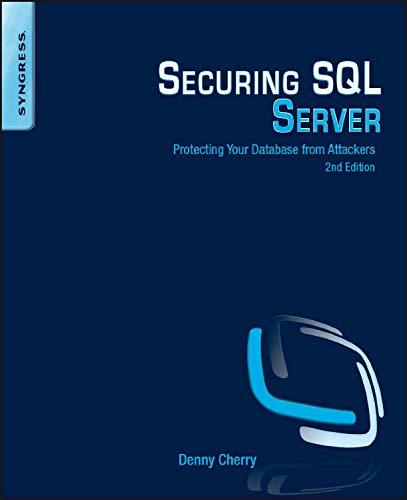Question
Dear All, would you please help me with the below assignment using C++ : Project #5 Store CISP 400 C++ Programming Inheritance Using the last
Dear All,
would you please help me with the below assignment using C++ :
Project #5 Store
CISP 400 C++ Programming
Inheritance
Using the last assignment, create a class Store that will track inventory.
This class will contain a private fixed-size array of pointers to Inventory items from the last project.
It will have only three public member functions:
1. A default constructor that will create an empty Store.
2. A destructor. The destructor will clean up
3. A member function void Run(); This will start the inventory control program and display a menu through which the user may interact with the object. The menu should offer the following choices
1. Enter a new item into inventory
2. Display the inventory.
3. Display the total quantity of inventory items.
4. Display the totals: total gross profits.
5. Quit.
4. NO MORE! Only three!
----------------------------------------------------------------------------------------------------------------------------------
The last assignment was:
Project #4 Inventory
CISP 400 Programming Project #4
Inheritance
For this assignment we will start with a base class that I have provided: Inventory[1].
This is an abstract base class. You will publicly inherit:
Inventory
o Hardware
Fastener
Hinge
o Lumber
Hardwood
Softwood
o Pipe I will provide these as examples
Plastic
For every data member of every class provide set and get functions
Class Hardware will have a private data member of _material_type, an enumerated type Material_Type {MTunknown, Stainless, Steel, Copper, Bronze}.
Class Lumber will have a private data member of _surfacing_type, an enumerated type Surfacing_Type {STunknown, Rough, S2S, S4S}.
Class Fastener will have a private data member _fastener_type, an enumerated type Fastener_Type {FTunknown, Nails, Screw, Bolt}; a private data member _profit_margin that will be a percentage stored as a float: Nails 5%, Screws 7.5%, Bolts 10%; a private data member _pieces which will store the number in Inventory.
Class Hinge will have a private data member _hinge_type, an enumerated type Hinge_Type {HTunknown, Butt, Overlay, Offset} a private data member _pieceswhich will store the number in Inventory. All hinges will have a profit margin of 12.5%.
Class Hardwood will have a private data member _wood_type, an enumerated type Wood_Type { WTunknown, Oak, Maple, Birch}; a private data member _board_feet which will store the number of board feet in this lot of Inventory. Profit margins are: Oak 15%, Maple 18%, Birch 12.5%.
Class Softwood will have a private data member _thickness, an unsigned; _units an unsigned that tracks the number of units in stock; profit margin: 5% plus .1% for every of thickness. For example the profit margin for thick lumber is 5% + 3 * .1% = 5.3%. Lumber that is 1.5 thick would be 5% + 6 * .1% = 5.6%. All Softwood has a SurfacingType of S4S.
All of these enumerated types will be declared in the public part of the class. See Pipe and Plastic for examples of this. Common attributes should be collected into common base classes we will talk about this in class.
[1] Real UPC codes are exactly 12 numeric characters. 12! Do we feel like typing 12 characters every time we want to test our code? No! So, I have shortened the length to 3. I have used a const: change it to 12 and it is real-world correct. But, the const is in my implementation file, so you do not have access to it. L
Step by Step Solution
There are 3 Steps involved in it
Step: 1

Get Instant Access to Expert-Tailored Solutions
See step-by-step solutions with expert insights and AI powered tools for academic success
Step: 2

Step: 3

Ace Your Homework with AI
Get the answers you need in no time with our AI-driven, step-by-step assistance
Get Started


